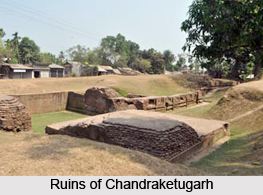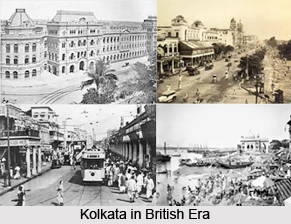 History of Kolkata dates back to the late 17th century with the arrival of Job Charnock, a British trader in the then Sutanuti. Before that the Muslim and the Hindu rule did not give so much description about the history of Kolkata. Kolkata is the capital of the Indian state of West Bengal. Located in eastern India on the east bank of the River Hooghly, the city is a colonial city developed by the British East India Company and then the British Empire.
History of Kolkata dates back to the late 17th century with the arrival of Job Charnock, a British trader in the then Sutanuti. Before that the Muslim and the Hindu rule did not give so much description about the history of Kolkata. Kolkata is the capital of the Indian state of West Bengal. Located in eastern India on the east bank of the River Hooghly, the city is a colonial city developed by the British East India Company and then the British Empire.
Early History of Kolkata
It is said that the archaeological evidences at Chandraketugarh proves that the region of Kolkata had been inhabited for over two millennia. But the history of Kolkata, however documented from the beginning of the British rule in India, when the East India Company was merging its trade business in India in 1690. The three villages, in particular, Kalikata, where the city is located, was incorporated by Job Charnok, the administrator of the Company and the history of Kolkata starts from this very time. According to some scholars, Kolkata was designated a special status with the establishment of the Fort William in 1698.
Medieval History of Kolkata
 The past history of Kolkata recounts the fact that the emergence of "Calcutta" as a country capital is not a sudden outcome. The British, with their solemn aim to establish a political hold in India, approached towards Calcutta. The Nawab of Bengal, Siraj-ud-daulah, found the British supremacy as an adverse threat to his sovereignty. Infuriated with the British when they provide refuge to one of Krishnaballav, who had embezzled money from Diwani of Dhaka, Siraj, invaded the British establishment and captured Cossimbazar and finally Calcutta, for which a period of short siege crept up on 20th June 1756 and the Governor and many other officials escaped down the Hooghly River. Later the Battle of Plassey ended the rule of Siraj and the establishment of British Government in India.
The past history of Kolkata recounts the fact that the emergence of "Calcutta" as a country capital is not a sudden outcome. The British, with their solemn aim to establish a political hold in India, approached towards Calcutta. The Nawab of Bengal, Siraj-ud-daulah, found the British supremacy as an adverse threat to his sovereignty. Infuriated with the British when they provide refuge to one of Krishnaballav, who had embezzled money from Diwani of Dhaka, Siraj, invaded the British establishment and captured Cossimbazar and finally Calcutta, for which a period of short siege crept up on 20th June 1756 and the Governor and many other officials escaped down the Hooghly River. Later the Battle of Plassey ended the rule of Siraj and the establishment of British Government in India.
Modern History of Kolkata
The modern history of Kolkata on looks the budding of social and intellectual fervour, in the tumultuous panorama of burning politics. Hickey`s "Bengal Gazette" or "Calcutta General Advertiser" is the first newspaper to be printed in India is the invaluable Chronicle of the social life of contemporary Kolkata. Contemporary memoirs of the time are the major sources of the history of Kolkata. Kolkata witnessed the growth of intellectual activities with the national conferences all being held at the core of Calcutta. Kolkata is also the native city of Indian National Congress. However the contemporary history of Kolkata begins right from the period of post independence and the partition of India. Due to the partition a mass of Muslims left Kolkata for East Pakistan and a vast chunk flee from Dhaka to sought refuge in Kolkata. Hence the infrastructure and the demography of Kolkata have undergone a massive change. In the recent years, Kolkata is inflicted with the violence of the Marxist- Maoist and the Naxalites. The history of Kolkata in the present age is marked with the regime of the West Bengal Communist Party (CPIM) and Trinamool Congress Government.



















